The drug situation in Europe up to 2023 – an overview and assessment of emerging threats and new developments (European Drug Report 2023)
This page draws on the latest data available to provide an overview of the current situation and emerging drug issues affecting Europe, with a focus on the year up to the end of 2022. The analysis presented here highlights some developments that may have important implications for drug policy and practitioners in Europe.
This page is part of the European Drug Report 2023, the EMCDDA's annual overview of the drug situation in Europe.
Last update: 16 June 2023
EVERYWHERE, EVERYTHING, EVERYONE
The complex challenge of addressing contemporary drug-related problems
Illicit drugs have a significant impact on European health and security
A key message from the 2023 European Drug Report analysis is that the impact of the use of illicit drugs is now seen almost everywhere in our society. Almost everything with psychoactive properties has the potential to be used as a drug. This means that everyone, whether directly or indirectly, can be affected by illicit drug use and the problems associated with it.
Everywhere

Today, drug issues have an impact almost everywhere. Domestically, they are manifest in and exacerbate other complex policy problems, such as homelessness, the management of psychiatric disorders, and youth criminality. We are also observing greater levels of violence and corruption driven by the drug market in some countries. Internationally, drug problems are growing in many low- and middle-income countries, undermining governance and development and adding to the already considerable public health and security challenges many countries face.
Everything

Increasingly, we are observing that almost everything with psychoactive properties can appear on the drug market, often mislabelled or in mixtures, leaving consumers potentially unaware of what they are using, increasing health risks and creating new law enforcement and regulatory challenges.
Everyone

The impact of the developments we are seeing means that everyone is in some way likely to be impacted by illicit drug use, the operation of the drug market and the problems associated with it. Directly, we see this in those who develop problems and need treatment or other services. Indirectly, we see it in the recruitment into criminality of vulnerable young people, the strain on health budgets and the social costs for communities that feel unsafe or where institutions or businesses are undermined by corruption or criminal practices.
The drug situation in Europe in 2023 – an overview
Availability of most illicit substances remains high
An analysis of the supply-related indicators for the commonly used illicit drugs in the European Union suggests that availability remains high across all substance types. The market is now characterised by the relatively widespread availability of a broader range of drugs, which are often available at high potency or purity. Large seizures of drugs being trafficked to Europe in intermodal shipping containers have continued to be detected, with commercial supply chains a key target for infiltration by organised crime groups. Europe also remains an important production area for some substances, especially synthetic drugs and cannabis.
Greater diversity in drug availability and use is creating new health and policy challenges
High drug availability has been accompanied by a greater diversity in the substances on the illicit drug market, exposing consumers to a wider range of psychoactive substances. These include new synthetic drugs, for which knowledge about the health risks is often limited. This raises concerns about the potential for the greater use of illicit substances in general and the increased risks associated with some of them. People who use drugs may be at greater risk of adverse health outcomes, including poisonings and deaths, through consuming, possibly unknowingly, higher-potency or more-novel substances, or mixtures of substances where drug interactions may increase the potential health harms.
Evidence-based and joined-up responses can work, but they are often not sufficiently available
Although important knowledge gaps remain, research and investment in service development means that in the areas of drug prevention, treatment, harm reduction and support to recovery, we now have a better understanding of what interventions are likely to be effective. The interrelated nature of problems associated with drug use and other complex social policy issues also means that there is a greater recognition of the need for more integrated and comprehensive responses. Synergies are therefore needed with policy and practice in other important areas, including housing support, generic healthcare, youth and elderly services, mental health provision and the criminal justice system. However, both the availability of drug-specific responses and examples of well-developed, integrated models of care are extremely heterogeneous at the European level and, in many countries, there is a need to invest more in both of these areas.
Responding to more diverse and complex needs
Growing support for implementing evidence-based substance use prevention

Substance use prevention aims to stop or delay the use of psychoactive drugs. It also may help those who have started to use substances to avoid the development of drug use disorders. However, historically, not all approaches utilised in this area have been found to be effective, and interest in the identification and implementation of evidence-based prevention programmes has been increasing. Achieving this objective is now supported by the establishment of prevention programme registries, training initiatives and the development of quality standards. The European Prevention Curriculum is designed to improve the overall effectiveness of prevention efforts. More than 25 EU Member States and neighbouring countries now have national European Prevention Curriculum trainers. Prevention efforts are also supported by Xchange, a European online registry of evaluated prevention interventions.
Provision of harm reduction services needs to be further strengthened
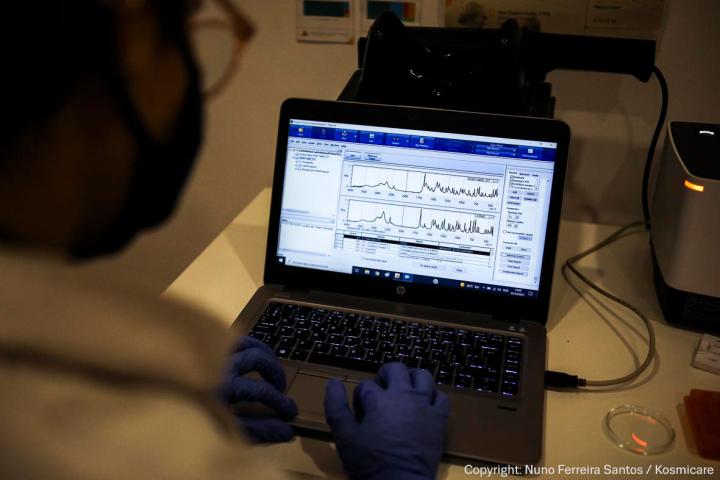
The use of illicit drugs causes a range of acute and chronic harms and is a recognised contributor to the global burden of disease. Related harm reduction responses, such as opioid agonist treatment and the provision of sterile equipment to people who inject drugs, are now widely accepted as making an important contribution to healthcare provision. However, coverage and access to these types of interventions remain inadequate in some EU Member States compared with the estimated needs. Some countries have also invested in newer services, such as drug consumption rooms, take-home naloxone programmes and drug checking facilities. The availability of these services remains more limited. Moreover, there is generally less consensus among countries on the extent to which these measures are appropriate responses. A need exists, therefore, for further research and evaluation studies to strengthen the evidence base required for informing policy deliberations in this area.
Europe's rapidly evolving drugs situation creates new challenges for harm reduction and risk communication

Greater diversity in drug availability and use is also creating new challenges for the development and implementation of services to reduce harms. These services are needed to help mitigate health risks arising from more complex consumption patterns, new substances and mixtures of substances. There is, for example, a need to consider what constitutes effective harm reduction approaches to the use of substances, whether they are synthetic opioids, synthetic stimulants, new types and forms of cannabis products, as well as dissociative drugs such as ketamine. A growing concern is the implications of the inadvertent consumption of potent substances or mixtures of substances. Key policy considerations here include the risk behaviours which harm reduction services target, the evidence base that supports their work, and what constitutes standards for quality of care. There is also a parallel need to develop effective risk communication strategies to alert consumers to the evolving risks in this area, particularly those associated with new substances, drug interactions, high-potency products, or routes of administration.
Investment needed to achieve targets for reducing the burden of infectious diseases

People who inject drugs are at risk of contracting infections such as viral hepatitis B and C (HVB and HCV) and the human immunodeficiency virus (HIV). HIV infections associated with drug injecting have been falling over the last decade but concern exists that the low number of new infections observed in the most recent data may reflect, in part at least, a delay in diagnosis due to a disruption of testing caused by the COVID-19 pandemic.
There are also other signals that greater investment is needed if the target of ending AIDS and the epidemic of viral hepatitis in Europe is to be achieved by 2030. Local HIV outbreaks at city level associated with stimulant injecting have been a recurrent problem in Europe in the last decade, suggesting that more efforts are needed to reduce these harms. Over half of new HIV cases among people who inject drugs were diagnosed late, increasing the risk of associated morbidity and mortality. Needle and syringe provision is important for reducing disease transmission, but only a few countries currently achieve the targets recommend by the WHO for this kind of provision. Barriers to the uptake of HCV testing and treatment also exist in many countries, resulting in undiagnosed and untreated infections.
Enhanced toxicological and forensic data sources are needed to inform policies and actions
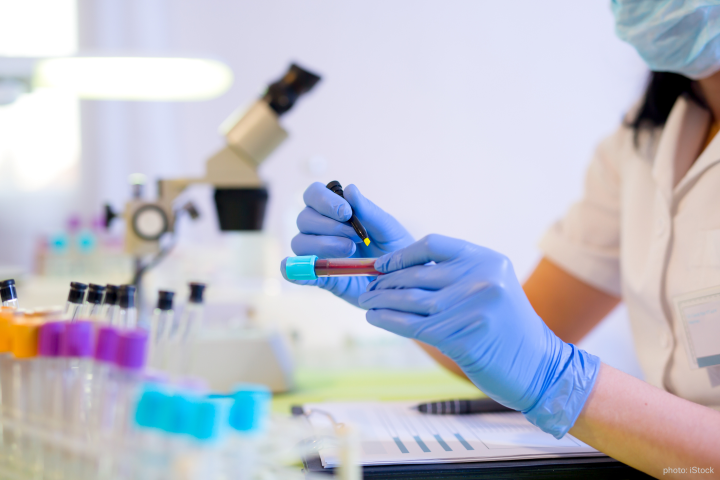
The 2023 European Drug Report highlights the growing importance of synthetic drugs, the appearance of novel substances, new production practices within the drug market, and the fact that many of the harms associated with drug consumption are exacerbated by interactions between drugs, knowingly or unknowingly consumed together. The continued detection of synthetic cannabinoids alongside natural cannabinoids in herbal material raises similar concerns. All these issues provide support to a conclusion running throughout the analysis we provide this year: that forensic and toxicological information sources have become essential elements for understanding developments both in the drug market and on the health implications of changing patterns of drug consumption. Currently, these sources are not sufficiently available, and this inhibits our understanding of important issues such as the role that polydrug consumption patterns play in drug overdoses. Positively, however, from 2024, the new EUDA will launch a European network of forensic and toxicological laboratories, with the aim of strengthening capacity and information resources in this area.
Implications of the war in Ukraine for Europe’s drug situation

Over a year into Russia’s invasion of Ukraine, the country remains caught in the grip of a humanitarian crisis, with Ukraine’s health and social systems seriously impacted by the conflict. The war has made access to healthcare, including drug treatment, more difficult to deliver. In order to provide continuity of care to people in opioid agonist treatment, Ukraine’s Ministry of Health has established partnerships with a range of non-governmental organisations. Alongside this, Ukrainians continue to seek refuge in the European Union. EU countries have needed to scale up their capabilities in order to provide care for displaced people who use drugs. An important element of this has been providing access to language services, as well as recognising the parallel need to provide accommodation, social welfare and childcare support. The devastation of essential infrastructure and the volatility of the conflict have made the operation of drug monitoring systems and analysis of changes to the drugs situation within Ukraine extremely difficult. What does emerge from the available information is that heroin availability within Ukraine appears to have declined; however, synthetic drug production and use appear to have been less affected. Heroin trafficking through Central Asia and the Caucasus and through the Black Sea to Europe also appears to have been disrupted by the war. A possible consequence of this is that trafficking activities on other routes into Europe may have increased.
Cannabis: new challenges for policy and practice
National cannabis policies and regulatory challenges are becoming increasingly complex

Policies and regulatory responses to cannabis are increasingly faced with new challenges posed by new forms and uses of this substance. Developments in this area appear to be influenced in part by the creation of recreational cannabis markets in the Americas and in part by greater commercial interest in developing consumer products that contain extracts from the cannabis plant. The scope of national cannabis policies in Europe is gradually widening and now encompasses, in addition to the control of illicit cannabis, the regulation of some forms of cannabis for therapeutic purposes and the emergence of commercial products that contain derivatives from the cannabis plant.
Baseline data are needed to assess the impact of possible changes in cannabis regulation

Some EU Member States are also changing their policy approach to recreational cannabis use. In December 2021, Malta legislated for home growing and cannabis use in private, alongside non-profit communal growing clubs, for recreational purposes. Germany is planning to permit home growing and non-profit clubs, and Luxembourg is planning to permit home growing; both countries expect a system of sales to be developed later. The Netherlands is piloting a model for a closed cannabis supply chain for cannabis coffeeshops, and Czechia has also announced plans for a regulated and taxed distribution system. In addition, non-EU Switzerland has started to authorise pilot trials of sales or other distribution systems for specific residents within certain cities. Regardless of the nature of any policy change in this area, an assessment of its impact will be dependent on the existence of good baseline data to provide a basis for ongoing monitoring and evaluation.
Understanding the public health implications of the high availability and use of cannabis products

Cannabis remains the most commonly consumed illicit substance, and in 2021 the quantities of cannabis resin and herbal cannabis seized reached their highest level in a decade, indicating the continuing high availability of this drug. Overall, this year’s analysis concludes that there is a need for a better understanding of the problems experienced by cannabis users and the existing referral pathways and treatment options. Cannabis is reported to be responsible for a significant share of Europe’s new drug treatment admissions, but the situation appears quite heterogeneous between countries, both in terms of the current situation and reporting practices. A recent EMCDDA review observed increased availability of psychosocial treatments, such as cognitive behavioural therapies, to those experiencing cannabis use problems, but overall there is still a need to understand better the extent to which cannabis users seek help for their problems and what types of services are likely to be appropriate to meet needs in this area.
Diversification and adulteration

There is also an increasing diversity of cannabis products available in Europe. These include high-potency extracts and edibles, which have been linked to acute toxicity presentations in hospital emergency departments. In 2021, there was an overall increase in reports of herbal material where THC or other natural cannabinoids were found alongside synthetic cannabinoids. This has fuelled concerns that cannabis products, usually of low THC content, are being adulterated with potent synthetic cannabinoids, highlighting the importance of toxicological analysis to detect these substances. Adulterated herbal materials can look like natural cannabis and can therefore be mis-sold as cannabis to unsuspecting consumers. Some synthetic cannabinoids are extremely potent and have been linked to fatal and non-fatal overdoses. Cannabis edibles are food products, typically ‘sweets’ infused with cannabis extract, which have become increasingly available on the illicit European market since 2021. These products pose risks because of their THC content and the possibility that they may be mistaken for legitimate commercial products, especially by children. Some of these edible products are available in packaging that resembles commercial products and some samples have also been found to contain synthetic cannabinoids, increasing further the health concerns in this area.
HHC – the first semi-synthetic cannabinoid appears on the European illicit drug market

Diversity on the cannabis market increased further in May 2022, when the first semi-synthetic cannabinoid, hexahydrocannabinol (HHC), was identified as being available in Europe. HHC is chemically similar to delta-9-tetrahydrocannabinol (delta-9-THC), the main psychoactive substance in cannabis, and it appears to have broadly similar effects. However, neither the pharmacology nor the toxicology of HHC in humans has been studied in detail. During 2022, HHC was identified in two thirds of EU Member States, and it has been commercially marketed in some EU Member States and sold as a ‘legal’ alternative to cannabis. HHC may be sprayed onto or mixed with low-THC herbal cannabis, which may appear and smell similar to illicit cannabis. It has also appeared in vapes and food products. HHC is believed to be synthesised from cannabidiol (CBD), which in turn is extracted from low-THC cannabis (hemp). Since its emergence, other semi-synthetic cannabinoids have also been detected, suggesting commercial interest in this area. The newness of these cannabis forms and the lack of empirical evidence means that there is considerable uncertainty about the possible impact of these substances on human health.
Cocaine and synthetic stimulants have become more important
Historically high cocaine availability
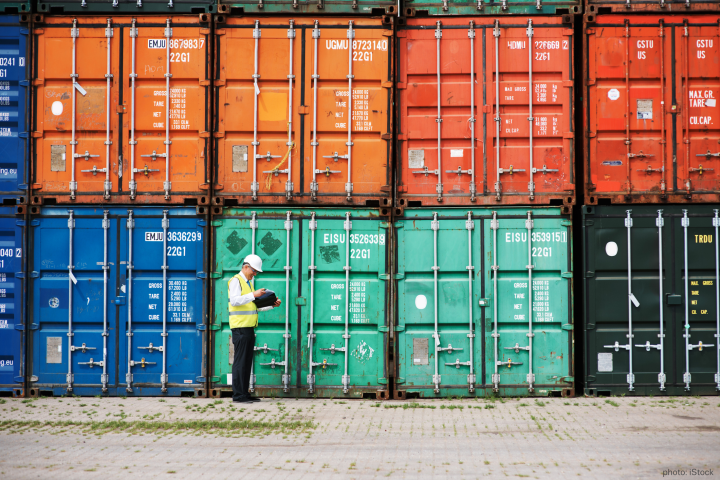
In 2021, EU Member States seized a record 303 tonnes of cocaine. The trafficking of large volumes of cocaine through Europe’s major seaports, in intermodal commercial shipping containers, is a significant factor in the high availability of this drug in Europe today. The impact of high cocaine availability is reflected in concerns about an increase in both health-related problems and levels of crime, including violent crimes associated with drug market activities. Large seizures also reflect the increased efforts made by law enforcement to disrupt trafficking through major European ports. However, there are also signals that trafficking groups are increasingly exploring new approaches to reduce the risk of detection. There is evidence to suggest, for example, that they are targeting potentially vulnerable smaller ports in the European Union and in neighbouring countries. There is also now a well-established secondary cocaine production industry in Europe that facilitates the use of innovative methods for trafficking, which can make the detection of cocaine concealed in commercial cargoes more challenging.
Increasing evidence of the negative impact of high cocaine availability
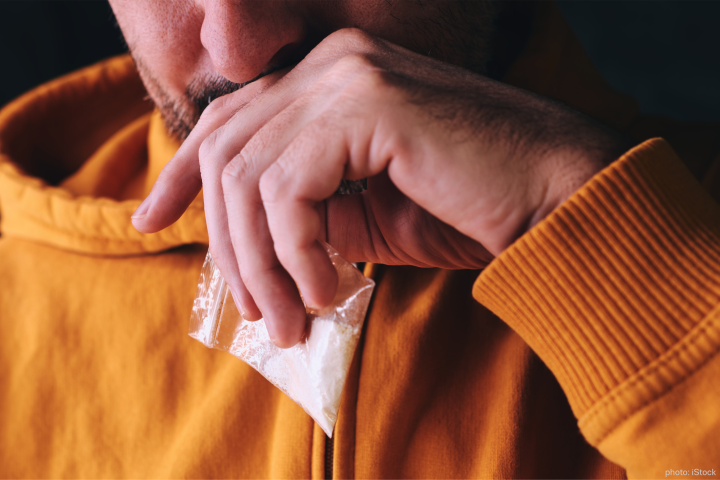
Cocaine is now the second most frequently reported drug, both by first-time treatment entrants and in the available data on acute drug toxicity presentations to sentinel hospital emergency departments. The available data also suggest that the drug was involved in about a fifth of overdose deaths in 2021. Due to methodological challenges, cocaine-associated mortality is likely to be under-reported in our current data sets. Increased availability also appears to be associated with some signs of a possible diffusion of cocaine use into more marginalised groups, with cocaine injection and the use of crack cocaine reported in some countries.
Synthetic stimulants – more diversity in the illicit drug market linked to risks for public health
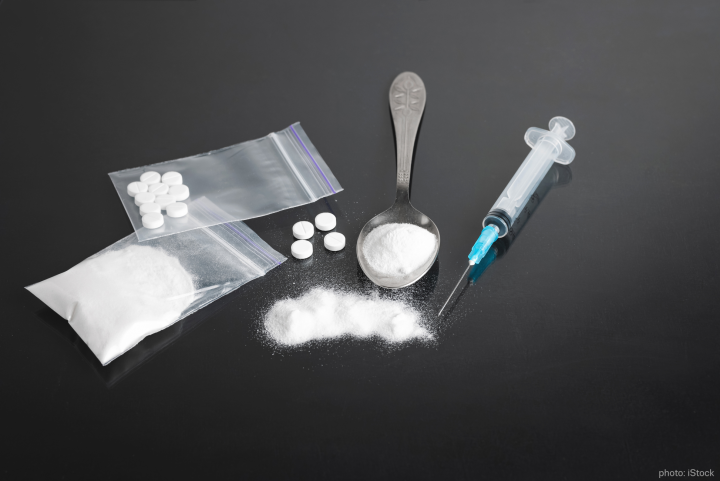
Alongside cocaine, the consumption of synthetic stimulants is associated with risks to both physical and mental health. Most indicators suggest that amphetamine remains the most commonly used illicit synthetic stimulant in Europe. However, there is increasing diversity in the drug market in this area, with signs that both methamphetamine and synthetic cathinones are now contributing more significantly than in the past to Europe’s stimulant-related problems. Consumers may view different stimulants as functionally similar and be willing to try new products based on their availability in the market. As synthetic stimulants may also be available in similar-looking powders or pills, consumers may sometimes be unaware what particular stimulant or mixture of stimulants they are consuming. These drugs can also be found in tablets marketed as MDMA. Overall, developments in this area mean that people who use drugs may be at greater risk of adverse health outcomes, including poisonings, acute and chronic mental health problems, infectious diseases and deaths, through consuming, possibly unknowingly, higher-potency or more-novel substances and engaging in high-risk behaviours.
Greater recognition of the role played by stimulants in harms associated with drug injecting

People who inject drugs are at greater risk of contracting blood-borne infections or dying from a drug overdose. Despite a continued decline in injecting drug use over the past decade in Europe, this behaviour remains responsible for a disproportionate level of the harm associated with illicit drugs. Historically, heroin has been the main drug associated with injecting. However, other drugs, including stimulants and medicines, are also now more commonly injected, either alone or in combination with heroin or other opioids. Injecting stimulants is associated with high-frequency injecting patterns of use, and has been linked to local HIV outbreaks in cities in Europe. Injecting poorly dissolved synthetic stimulants, medicines or crack cocaine can also increase the risks of vascular damage or acquiring a bacterial infection. Polydrug injection can also increase the risk of drug overdose. Understanding the harms linked to changing patterns of injecting drug use is therefore key to designing interventions to reduce the harm associated with this behaviour.
Signals of increased volatility in the MDMA market but concerns still exist about the availability of high-purity products

Current data suggest an overall relatively stable situation in respect to MDMA consumption, although there is considerable heterogeneity at national level. This follows a period in which indicators of MDMA use suggested a temporary decline in use during the early phases of the COVID-19 pandemic, when social distancing measures disrupted nightlife and other social events associated with the use of this substance. Europe remains an important centre for MDMA production, both for domestic consumption and for export to non-EU markets. With a typical MDMA content of 161 to 173 milligrams, the overall strength of tablets remains high by historical standards, and this has generated concerns about the risk of health harm for consumers. However, there have been some recent signals that suggest a possible decline in production volumes, and some reductions have been noted in the MDMA content of tablets. It is unclear whether these signals indicate that producers are having problems sourcing the precursor chemicals, or whether they are switching to the production of other substances that are more in demand or more profitable, or whether the market is responding to a perceived consumer demand for lower-strength products. However, overall, high-purity tablets and powders still remain available on the European market, and this information is important for informing prevention and harm reduction interventions in this area.
Greater diversity in drug availability and use
Signs that ketamine has become an established drug of choice among some groups
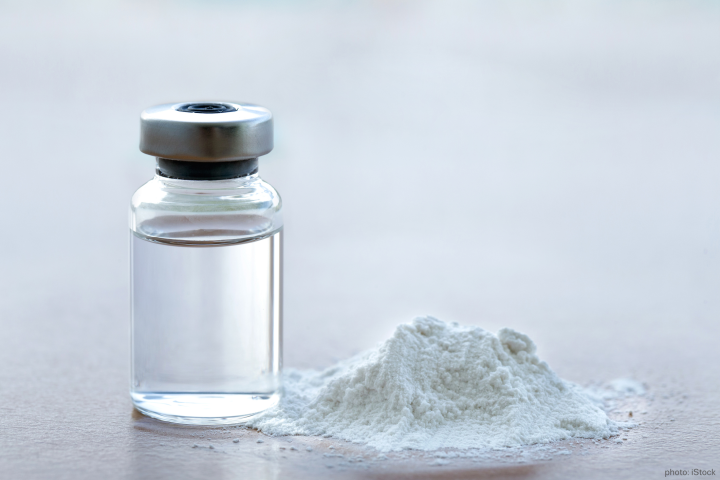
The quantity of ketamine seized and reported to the EU Early Warning System on new psychoactive substances varies considerably over time, but has remained at relatively high levels in recent years. This, along with other information, suggests that ketamine is likely to be consistently available in some national drug markets and has become a more established drug of choice for some groups. Ketamine is commonly snorted, but can also be injected. It has been linked to various dose-dependent acute and chronic harms, which in long-term users can include urological complications and bladder damage. Ketamine may also be found added to other drug mixtures, including MDMA powders and tablets. It is also found in mixtures sold as ‘pink cocaine’, a product that appears to be attracting increasing consumer interest. In Europe, the term pink cocaine usually refers to mixtures of ketamine with other synthetic drugs, such as amphetamines or MDMA. As noted elsewhere in the 2023 European Drug Report, people using mixtures of drugs may be unaware of the substances they are consuming, or that interactions between different drugs can expose them to elevated health risks.
Health concerns triggered by the use of nitrous oxide among young people

A recent EMCDDA review noted that in a number of EU Member States, there are signs of an increase in the use of nitrous oxide, also known as laughing gas, for the purposes of intoxication. Nitrous oxide has a number of commercial uses, and there is a debate on the extent to which this substance is associated with negative health risks, especially in episodic users. However, the intensive and chronic use of nitrous oxide has been linked to health harms including poisonings, burns and lung injuries and, in some cases of prolonged exposure, nerve damage from vitamin B12 deficiency. In some European cities, the disposal of the smaller stainless-steel canisters has also become a drug-litter issue. This drug appears to have become more accessible and cheaper, with the increased availability in some countries of larger gas canisters aimed at recreational users, which may also increase the risk of lung damage, due to the higher pressure of their contents. Therefore, taken together, the information available would suggest that there appears to be a strong argument for drug prevention and harm reduction services to address this substance in their work. Currently, regulatory approaches to the sale and use of this substance vary between countries.
Signals that the availability and production of synthetic cathinones in Europe is increasing
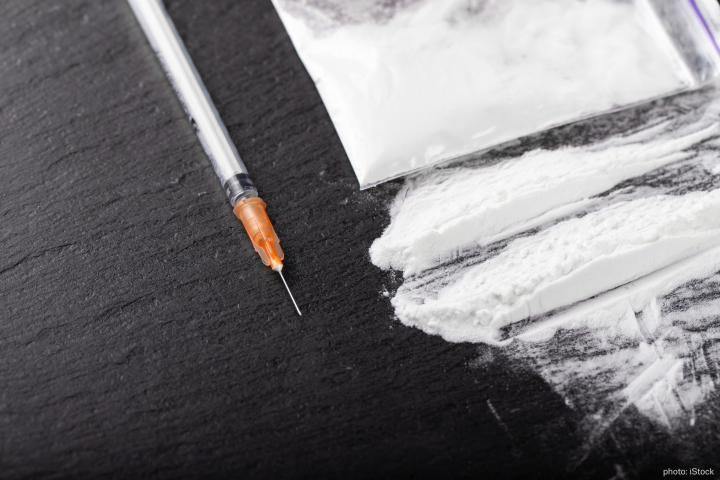
Marketed as replacement substances for drugs such as amphetamine and MDMA, synthetic cathinones, such as 3-MMC and 3-CMC, are also sometimes mis-sold as other substances. Although seizure numbers remain relatively low, very large quantities of synthetic cathinones have been found in some individual seizures, usually originating from India. This, together with evidence that synthetic cathinones are also being produced in Europe, suggests that these substances are becoming more available in Europe, where they have the potential to play an increasing role in the stimulant market in the future. Developments in this area also create new challenges for law enforcement, for example, chemically masked and non-controlled forms of synthetic cathinones have been trafficked into Europe for subsequent local conversion into controlled cathinones. Given the volumes of precursor chemicals seized, it appears likely that large-scale production for the European and possibly other markets may now be taking place.
Possible adverse consequences of growing interest in the therapeutic potential of psychedelic drugs

Both clinical and public interest has been growing in the possible therapeutic use of some psychedelic substances, including novel and little-known substances. A growing number of clinical studies are exploring the potential of a range of psychedelic substances to treat different mental health conditions. Some research appears promising, however, generalising in this area is difficult, partly because much of the research is still in its infancy, partly because of the large number of chemicals under review and partly because of the wide range of conditions that are being studied. These developments have received considerable media attention, creating a concern that they may encourage greater experimental use of these substances without medical support, potentially putting some vulnerable individuals at risk of suffering adverse consequences. At the same time, there is evidence of unregulated programmes being operated both within the European Union and elsewhere, in which the use of psychedelic substances is included as part of a wellness, therapeutic or spiritually oriented intervention.
More complex opioid-related challenges
Europe’s opioid problems are evolving

Heroin remains Europe’s most commonly used illicit opioid and it also remains the drug responsible for a large share of the health burden attributed to illicit drug consumption. However, the data available also suggest that heroin no longer plays as central a role as it once did and synthetic opioids appear to be playing a more significant role in opioid-related problems in some countries. The quantity of heroin seized by EU Member States more than doubled in 2021 to 9.5 tonnes, while Türkiye seized a record 22.2 tonnes. Despite these large seizures, only marginal changes have been seen in the price or purity of heroin at retail level and, overall, the data available indicate that heroin availability remains relatively high. Nonetheless, there is little evidence of any significant increase in recruitment into heroin use, with indicators suggesting that, in most countries, users of the drug are an ageing cohort, many of whom will have a long history of contact with drug and other support services.
Heroin is playing a less significant role in opioid-related problems but remains a significant cause of harm

While heroin continues to be involved in the majority of opioid-related deaths overall, the number of countries in which this is the case has decreased. Data on acute drug toxicity presentations to hospital emergency departments also suggest that, in some cities, other opioids have overtaken heroin as a driver of presentations. Heroin has also declined in relative importance as a reason for seeking specialised drug treatment. In many ways, the observation that heroin is playing a less central role in drug problems can be viewed as a positive development; however, there are some important caveats here. Europe’s population of people who use heroin remains large, and their health and support needs are becoming more complex. Polydrug use patterns have become common among opioid users, and drug interactions – often where heroin is used alongside other substances – appear to have become a more significant component in increasing the risk of harm. In addition, established and novel synthetic opioids are becoming more associated with both drug-related morbidity and mortality and, in some countries, are now the main driver of opioid-related problems.
Multidisciplinary support needed to treat an ageing cohort of opioid clients

Current estimates suggest that opioid agonist treatment was received by about half of those engaging in high-risk opioid use in the European Union in 2021, an estimated 511 000 (524 000 including Norway and Türkiye). The evidence available supports opioid agonist treatment, with positive health and social outcomes observed, which include reductions in the risk of mortality. Over 60 % of clients in opioid agonist treatment, however, are now aged 40 or older, while less than 10 % are under 30 years old. This means that services have to address a more complex set of healthcare needs in a population that is becoming ever more vulnerable. Effective referral pathways are required to more generic services offering treatment for conditions associated with the ageing process. The treatment of this often highly marginalised group also needs to respond to a complex set of problems related, not only to their drug use, but also to mental health issues, social isolation, employment and housing. An increased emphasis on establishing effective multi-agency partnerships with generic health and social support services is therefore required.
Need to better understand the role played by polydrug use in opioid mortality
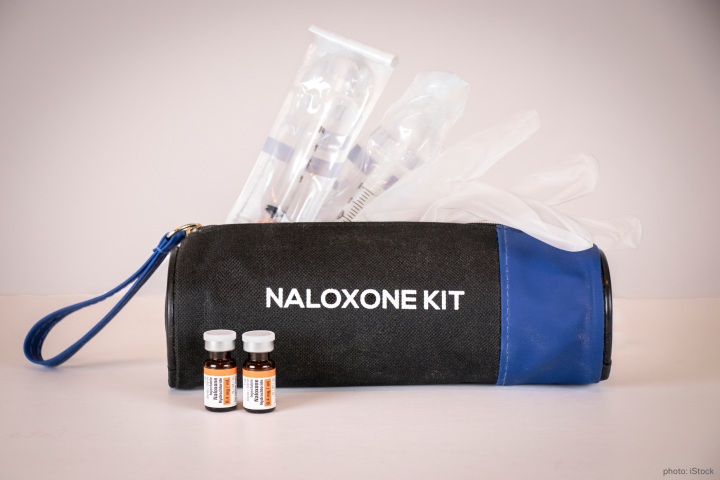
Opioids, usually in combination with other substances, remain the substances most commonly implicated in drug-induced deaths. While overall trends in deaths where opioids are implicated appear stable, the proportion of deaths in older age groups is increasing. The role played by heroin in overall rates of death appears to be decreasing in some countries. It is also important to note that where heroin is implicated, it is rarely found in isolation, indicating polydrug use is the norm. Where detailed toxicological information is available, in deaths where heroin is implicated, other opioids and medications are often also found to be present and may have played a contributing role. Deaths where stimulants are implicated, often alongside opioids, appear to be rising in some countries, and stimulants are more commonly implicated in deaths occurring among younger age cohorts. It is necessary therefore to recognise that patterns of polydrug use play an important role in drug-induced mortality, and this underlines the need for improved toxicological information. Drug interactions can also mean that service delivery models may need to be reviewed; for example, the use of either stimulants or synthetic opioids, in combination with heroin, has implications for the effective delivery of some interventions designed to reduce the risk of drug overdose. Overdoses involving potent synthetic opioids, for example, may require the administration of multiple doses of the opioid antagonist naloxone.
Interactions between new benzodiazepines and opioids

A lack of toxicological information currently means that the role benzodiazepines play in opioid-induced deaths is not sufficiently understood. Non-controlled and new benzodiazepines are available in Europe; however, data limitations make it difficult to comment on the scale of their use. Nonetheless, the evidence available is sufficient to indicate that these substances may have important consequences for health, especially when consumed in combination with other drugs. They are often very cheap and may be used by young people in combination with alcohol, sometimes resulting in potentially serious health reactions or aberrant behaviour. They have also been linked to increasing the risk of opioid overdose death and, in the most recent data, the proportion of overdose deaths involving benzodiazepines increased in some countries. An example of the complexity that can now exist in the drug market in this area comes from Estonia, where recent seizures have been made of mixtures containing both the new synthetic opioid metonitazene and bromazolam, a new benzodiazepine.
New synthetic opioids
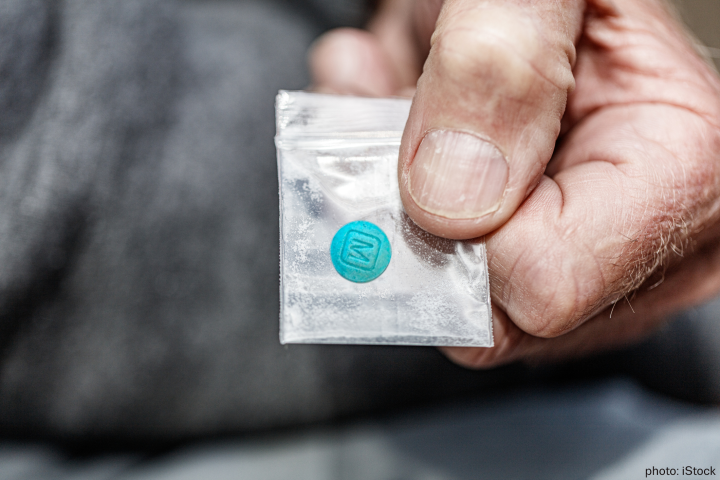
Drug problems in North America provide an example of how changes in patterns of opioid availability and use can have important implications for public health. In this world region, potent fentanyl derivatives have, to a large extent, displaced prescription opioids and heroin to become the main driver of an epidemic in opioid-induced deaths. New synthetic opioids are reported in Europe and may be becoming more common in some areas, but currently the patterns of availability and use are very different to those found in North America, with significant problems with these drugs mostly restricted to some northern and Baltic countries. In 2021, EU Member States reported around 140 deaths associated with fentanyl. A significant share of these, however, are thought to be associated with fentanyl diverted from medical use. While this is likely to be an underestimate, it is not comparable with the many thousands of fentanyl-related deaths reported during the same period in North America. Nonetheless, between 2009 and 2022, a total of 74 new opioids have been identified on the European drug market, with the EU Early Warning System receiving formal notifications of one additional new synthetic opioid in 2022 and three in the first four months of 2023. Most of the new opioids detected in recent years, however, do not belong to the fentanyl group but rather to the highly potent benzimidazole (nitazene) opioids. The available information from seizures, syringe residues and toxicological findings reported by the Baltic countries suggest an increase in availability and harms (including drug-induced deaths) during 2022 in these countries, particularly related to benzimidazole opioids and the fentanyl derivative carfentanil. Recent seizures have also found new synthetic opioids in mixtures containing a new benzodiazepine and the animal sedative xylazine. These combinations, respectively known as ‘benzo-dope’ and ‘tranq-dope’, have also been reported in North America, where they have been associated with an increased risk of overdose death. As new synthetic opioids are highly potent, a small amount is sufficient to produce a large number of typical doses and can pose an increased risk of life-threatening poisoning. This means that even if problems in this area are relatively limited at present, this group of substances represents a threat, with the potential to impact more significantly on European health and security in the future.
Europe needs to be prepared for possible implications of the ban on opium poppy cultivation in Afghanistan
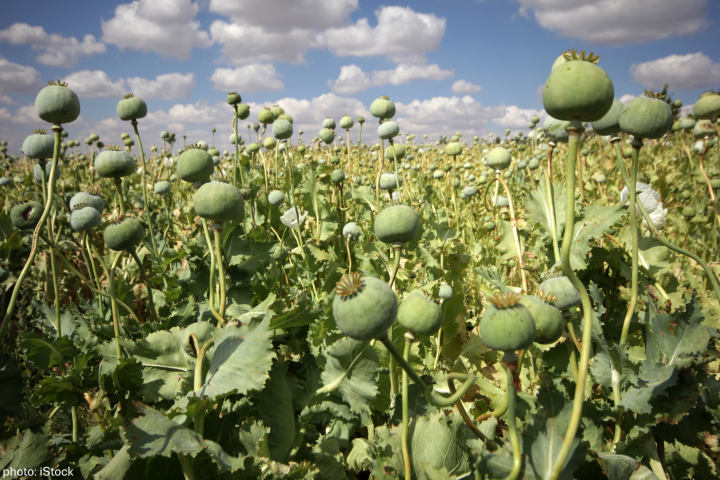
Most heroin consumed in Europe originates from opium poppies grown in Afghanistan. In April 2022, the Taliban announced a ban on opium poppy cultivation, raising the question of what implications this will have for opioid use in Europe. Following the Taliban’s takeover of the country in August 2021, estimated opium poppy cultivation increased in 2022 by nearly a third. Preliminary information for 2023, however, suggests that the area under cultivation has been substantially reduced. Moreover, parallel measures introduced to reduce methamphetamine manufacturing seem to have resulted in this form of drug production becoming less visible, and it may have been curtailed to some extent. Although more evidence is required to verify these conclusions, the information currently available does suggest a significant reduction in both opium and methamphetamine production in Afghanistan in 2023 is a possibility. There are a number of reasons, however, why the longer-term impact of the ban on opium poppy cultivation is difficult to predict. The economic hardship faced by farmers in the country may, for example, make sustaining this restriction over time politically difficult. In addition, the existence of stocks, and the fact that it usually takes over 12 months before the opium harvest appears in the European retail drug market as heroin, also makes it too early to predict the impact on drug availability in Europe. Nonetheless, if the ban on opium cultivation is enforced and sustained, it could have a significant impact on heroin availability. A previous short-lived ban on opium production in Afghanistan led to heroin shortages in Europe which, in some countries, have been associated with long-term changes in patterns of opioid consumption. This means it would be prudent for Europe to be prepared to respond to any possible impact of a potential decline in heroin availability from 2024 onwards. One possible consequence could be increased demand for treatment for opioid-related problems. A concern is that any shortage in the availability of heroin may drive an increase in demand for synthetic opioids. As developments in this area currently remain uncertain, intensive monitoring is required. Should changes be observed, mitigating measures may be needed, which could include increasing treatment capacity, reviewing harm reduction strategies and introducing more robust enforcement measures to target synthetic opioid supply. Finally, there may be a risk of additional security challenges, such as an increase in the flows of irregular migrants from Afghanistan due to a worsening economic situation among the country’s rural poor.
References
Recommended citation: European Monitoring Centre for Drugs and Drug Addiction (2023), European Drug Report 2023: Trends and Developments, https://www.emcdda.europa.eu/publications/european-drug-report/2023/drug-situation-in-europe-up-to-2023_en
Identifiers:
HTML: TD-02-23-150-EN-Q
ISBN: 978-92-9497-935-3
DOI: 10.2810/546221








